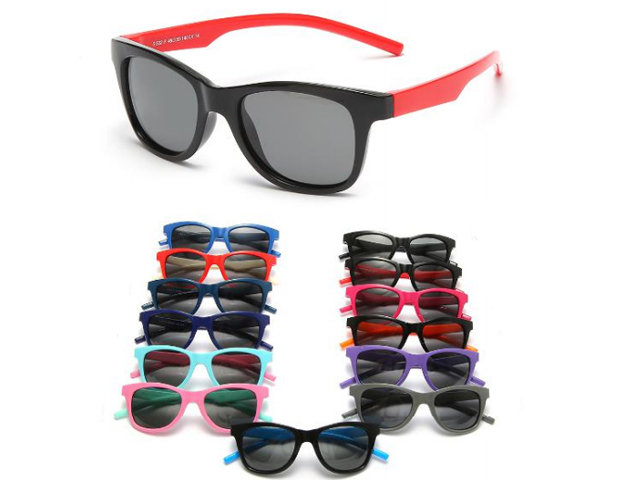
Why kids need sunglasses more than adults
Seeing that summer is coming, the sun's rays are getting stronger every day. And this means that, in addition to enjoying the benefits of sun exposure, it is time for us to prepare in advance to prevent UV exposure!
Many parents seem to attach great importance to sun protection. They put on sunglasses early, but only apply sunscreen to their babies. Actually, sunscreen is not protection from the sun, but protection from the UV rays in the sun. It is estimated that children receive three times as much UV exposure as adults each year, and the damage from UV rays continues to accumulate.
Excessive UV exposure can increase the risk of some eye diseases.

Sunglasses are a necessity for people of any age, because children's eyes are more transparent than adults, and UV rays reach the retina more easily, so sunglasses are important for them.
So it's not that children can't wear sunglasses, but they need to wear sunglasses more than adults.
Sunglasses for babies on the market can be said to be a mixed bag, and the sunglasses for babies must not be of inferior quality, let alone buy sunglasses with a concave shape. So how to choose children's sunglasses?
UV blocking rate
Look for glasses that block 100% of both UVA and UVB rays, which provide maximum UV protection. When buying children's sunglasses, you should choose a regular manufacturer and pay attention to the UV protection percentage mark on the instruction manual.
Lens color
The UV protection ability of sunglasses has nothing to do with the color of the lens. As long as the lens can block 100% of the sun's ultraviolet rays, mothers can choose the lens color according to their children's preferences. But there are now studies showing that long-term exposure to high-energy visible light, also known as "blue light," can also cause eye damage. Therefore, when choosing a lens color, you can give priority to amber or brass lenses that can effectively block blue light.
lens size
Sunglasses with large lenses can provide protection for the eyelids and the skin around the eyes, so it is best to choose sunglasses with larger lenses.
Lens material and frame
Since babies are naturally curious and hyperactive, there may be many unexpected situations, so their sunglasses should meet the standards of sports, and safety issues must also be considered. The safer resin lenses should be chosen and glass lenses should be avoided, and the frame should be flexible and easily bendable to ensure that the glasses fit the face.
About the elastic band
Since babies take a while to get used to wearing sunglasses, the elastic helps keep the sunglasses snug on their faces and prevents them from constantly taking them off out of curiosity. If possible, give priority to the kind of frame that can be replaced between the temples and the elastic band, which can also be used when the baby grows up, which is cost-effective.
children with refractive problems
Children who wear glasses for nearsightedness or farsightedness can choose color-changing lenses, which look the same as regular glasses indoors, but automatically darken in the sun to provide protection for the child's eyes.
When used correctly, sunglasses are the umbrella for your baby's eyes. Sunglasses for babies must be comfortable, otherwise the baby may be unwilling to wear them because they feel uncomfortable; the most important thing is not to wear sunglasses for babies for more than 2 hours in a row, and they must be taken once the baby enters the room or in the shade. Down.